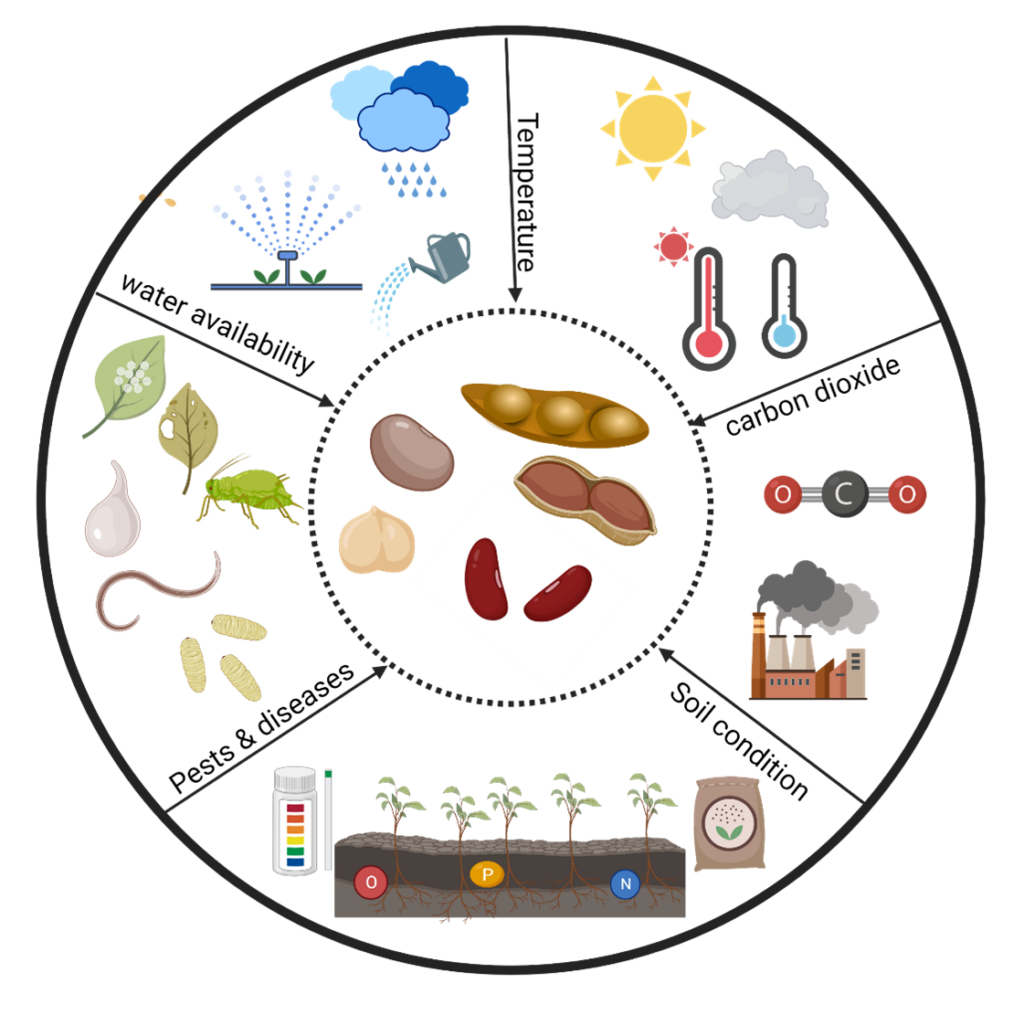
I was privileged to do my thesis research project in collaboration with the Leg4dev project at the University of Galway whose objective is to promote the scaling up of legume production in smallholder farmers. My project aimed at identifying opportunities, barriers, and innovations for accelerating seed multiplication rates for more effective scaling up of quality seed legumes globally. We conducted a comprehensive literature review, which will be complemented with a survey from legume seed experts on barriers, opportunities, and innovations for increasing seed multiplication rates.
The availability and accessibility of quality legume seed is the foundation of improved crop productivity to meet global nutritional needs and for environmental sustainability. However, legume seed availability remains a challenge for most developing countries. The seed multiplication rates determine the number of seeds that can be acquired from a single sown seed that is suitable for farmers’ use. When a new variety is first bred by a breeder and/or released as a registered variety by the national system, only small quantities of seed are typically available – this is called nucleus seed. Therefore, for grain crops, seed multiplication is important as it has implications for how rapidly and cost-effectively seed quantities can be bulked up from initial breeders’ seed to the quantities of certified seed that are necessary each season for farmers to plant(Boelt et al., 2015).
Seed propagated crops such as grain legumes and cereals, the seed multiplication factor, seed rate and grain yield differ across species and can also differ within species which is influenced by several barriers that limit the crops to achieve their potential yields. The differences affect the economic gains of both the seed producers and the farmers which determines the choice of investing in seed commercialization for seed companies and seed buying for farmers (Chibarabada et al., 2017). Through the research, several barriers affecting the seed multiplication factor were identified to be climate variability, poor agricultural practices in relation to seed production, and lack of emphasis in breeding programs on quality seed production. As shown in figure one when one or more of the factors coincide it can result in total losses of seed.

Figure 1: Legume species have different optimum growing conditions which impact seed production positively or negatively. The interaction and relationships between these factors can affect the overall seed multiplication factor of different legume species positively or negatively (Image was created on 20/06/2023 with BioRender.com).
As the climate changes, weather patterns are expected to change with countries experiencing floods, high temperatures, and reduced rains to none. Currently, the legumes seed sector already faces challenges of poor availability of improved seeds. The seed sector will face more challenges such as plants’ poor response to abiotic and biotic stresses which may create pressures in improved seed availability. Seed is the most vital agricultural component so whatever the challenges there must be an ongoing supply of good quality seed for continued production of food for the growing population and for achievement of sustainable goal sustainable development goals (SDG 2) of ending hunger, food security and improved nutrition, and promoting sustainable agriculture.
Our findings consider that improving seed multiplication rates can best be achieved by the integration of technological innovations into both breeding and seed multiplication programs and by improving agronomic practices supporting seed multiplication phases of the seed supply cycle. Policy review is also important to provide an enabling environment for technological advancements to support research programs in legume seed production.
References
Boelt, B., Julier, B., Karagić, Đ., & Hampton, J. (2015). Legume Seed Production Meeting Market Requirements and Economic Impacts. Critical reviews in plant sciences, 34(1-3), 412-427. https://doi.org/10.1080/07352689.2014.898477
Chibarabada, T. P., Modi, A., & Mabhaudhi, T. (2017). Expounding the Value of Grain Legumes in the Semi-and Arid Tropics. Sustainability, 2017. https://doi.org/10.3390/su9010060
Farooq, M., Gogoi, N., Barthakur, S., Baroowa, B., Bharadwaj, N., Alghamdi, S. S., & Siddique, K. H. (2017). Drought stress in grain legumes during reproduction and grain filling. Journal of Agronomy and Crop Science, 203(2), 81-102.
